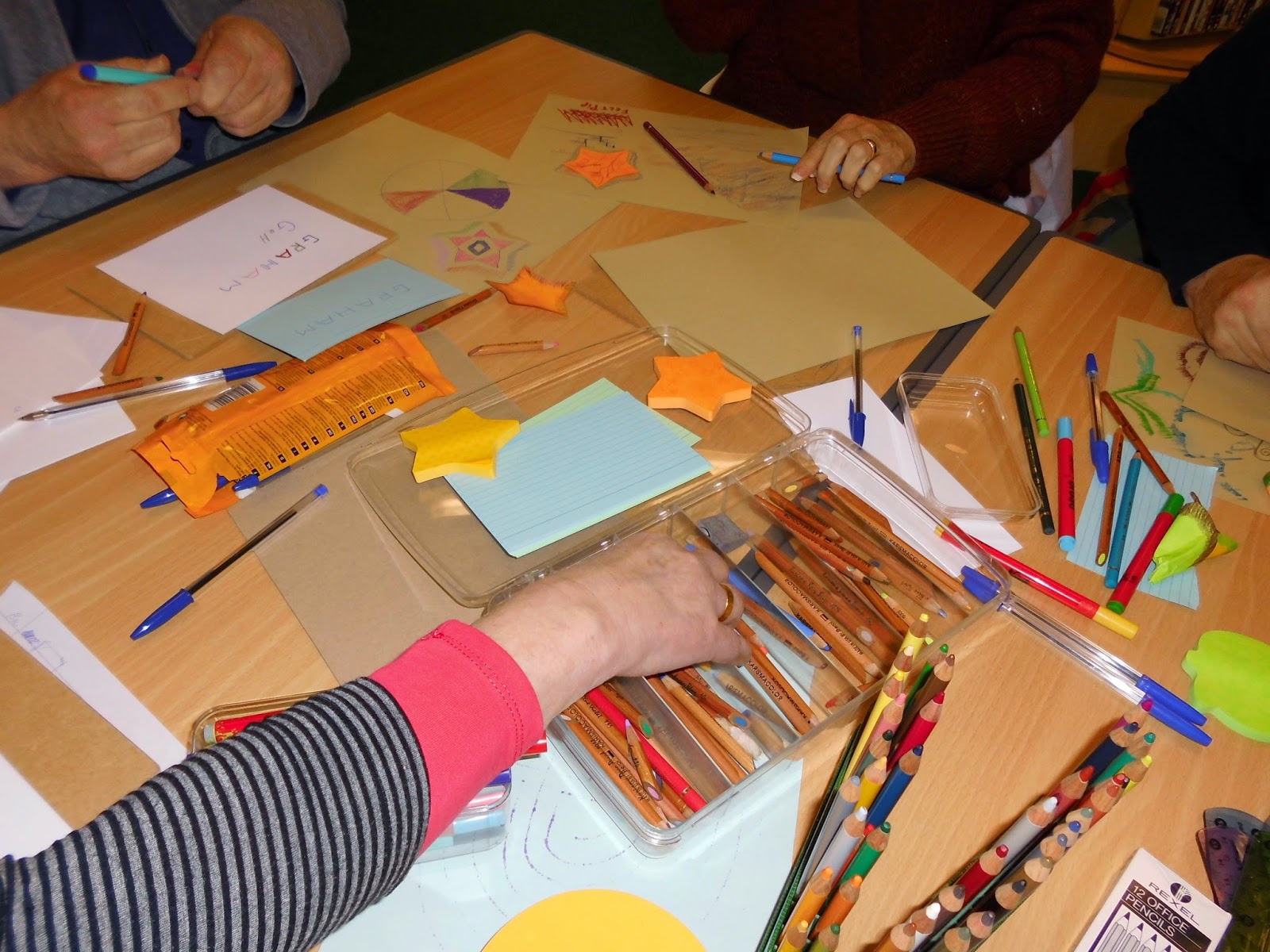We looked at some of Tate Britain's Christmas Trees made by contemporary artists and we had a go at making our own "consequences" versions.
Random results...
St Thomas's School Choir sang to us too.
 |
| "Peace on Earth" Fiona Banner 2007 tree and handmade, kit models of all the world's fighter aircraft |
Later, in 2011 Fiona Banner brought two life-sized sculptures made from a decommissioned Sea Harrier and a Jaguar into the Tate making the terrifying into beautiful thought provoking pieces.
 |
| untitled, Lisa Milroy 1990 tree & painted baubles on canvases |
Lisa Milroy's work around 1990 was about grouping beautifully painted, mostly everyday objects either on one large canvas or on individual smaller canvases. This tree is unmistakable by Milroy.
 |
| Mark Wallinger 2003 aspen tree & rosaries |
In Mark Wallinger's piece we're reminded of the birth and death of Jesus.
The Rosary Beads are a guide to assist in prayer and meditation centring on the Virgin Mary, Mother of God; the tree is a reminder of the wood of the cross; and its sparseness, the loss to the world at the crucifixion.
Christian or not it's a powerful reminder that life and death walk hand in hand.























